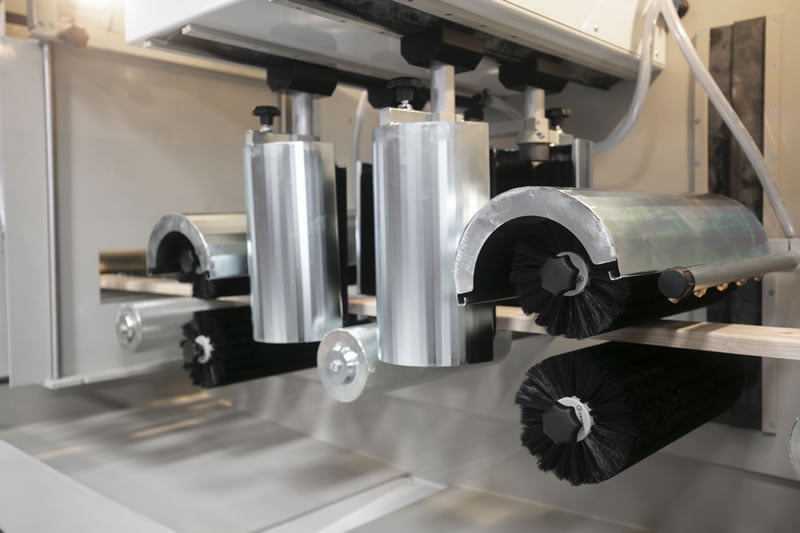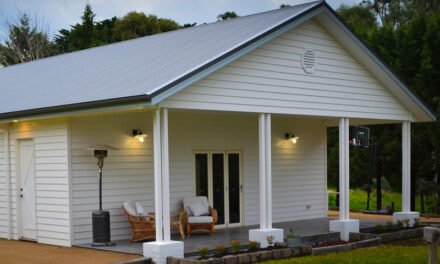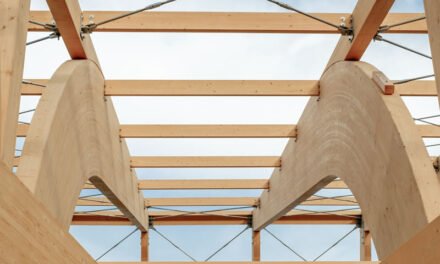Customers may not always know exactly what colour they want, but when it comes to consistency and environmental concerns, they have some very clear views.
There’s a surprising amount of crossover between interiors trends celebrating the natural qualities of timber and the ‘no make-up look’. For those who are strangers to foundation, this is a look most men will tell you involves a quick sweep of mascara and maybe lip balm and most women know takes a lot of skill to do perfectly.
Home buyers, renovators and developers want timber that is perfectly finished in their builds. Experienced builders will tell them the best results come from pre-coating – be that pre-oiling (and possibly staining) decks or pre-priming mouldings and boards. Yet end users can be reticent to pay a premium over raw product. Luckily, manufacturers are coming to the rescue, with painting and oiling machines that deliver superior finishes, in a fraction of the time and at a price difference much less than the labour costs for doing the job later.
Speedy results
Danish Ceetec is one of the best-known and best-regarded brands in the market, with several generations of coating machinery on the market today. A combination of brushes and nozzles are used to apply oil- or water-based timber oils, stains and paints.
“We’ve helped dozens of timber suppliers integrate Ceetec machines into their production lines in the last two years,” says Will Keaney, senior brand manager trade & industrial at Intergrain Timber Finishes – Ceetec’s Australia and New Zealand distributor. “They’re a great way of producing value-added product for timber mills or merchants who are looking for a point of difference in their offer.”
Intergrain also produces and stocks a wide range of oils, primers, floor finishes and more that are suitable for use in Ceetec machines, so their clients benefit from the strong relationship between the two companies.
The obvious advantage of pre-coated timbers is that they can be installed as soon as they reach site with no wait for coating or drying. But they also offer coverage that’s superior to manual applications. For example, pre-coating decking on all four sides helps prevent moisture uptake from the underside of the boards, which is the most common cause of problems such as condensation causing mould, expansion and cupping.
Good builders know pre-coating saves them both site work and problems, and are happy to educate customers about its value. Some overseas builders have even bought their own machines.
For the mill or merchant, it’s not a huge step to introduce a painting machine. Many are relatively compact and, depending on the model, can be a stand-alone item or added to an automated production line.
“There’s a new model coming onto the market now,” says Keaney. “We’ve been fielding requests from a lot of our customers for a model that can manage higher volumes, as they find they’re selling more and more pre-coated product.”
In response, Ceetec designed the IP 380. It’s an easy-to-operate model with a touch screen that lets you precisely and accurately set feed speed, volumes and application rates for each run, delivering four-sided coverage. Standard settings can also be saved, giving uniform quality for repeat productions and productions in different factories.
The IP 380 uses an optimal combination of spray and flow-coat technologies, and the flow-coat spray container can be removed, for easier cleaning or to replace with another colour. Depending on the timber and model options, capacity ranges from 20m/minute to 180m/minute – that’s 10.8km/hour.
Added benefits
In addition to the quality of the finish and speed of production, paint machines offer substantial health benefits, several of which are also economic pluses.
As semi-enclosed units, they make it easier to control fumes and spray. In many models, including the Ceetec series, excess paints and oils are recycled through a filter in a closed circuit that feeds back to the container – minimising waste and protecting both staff and the local environment from overspray and runoff. Some machines (including the IP 380) also come with automatic washing options.
Because the coating is usually applied long before the product reaches site, exposure to fumes is also minimised for the build team, other trades and the occupants.
Health matters
Fumes are increasingly a concern for owners and builders, with low- and no-VOC products steadily gaining in popularity and becoming more affordable. Several brands have focused on releasing paints and oils that are safe to use around humans as well as friendly to the environment.
“This market is very much driven by the consumer,” says Denzil Stephenson, director of Livos Australia, a company specialising in ecological plant-based finishes.
Its range of natural, non-toxic paints, oils, cleaners and maintenance products was developed for people with allergies and respiratory issues who found themselves affected by the high fume levels and synthetic content of traditional paints and coatings, but is now popular with people concerned about their home environment and ecological impact, too.
“One of our regular customers, who recommends our product to his customers, is a person who does flooring,” says Stephenson. “He prefers Livos finishes because they mean his team doesn’t have to worry about fume exposure while they work. Many architects also recommend our paints and floor finishes, especially if their clients have made a special request because they have sensitive skin or allergies, or they have a child who has allergies.”
The water-based Grava sealer/primer and Dubron paint base are both solvent free and have excellent water vapour permeability, allowing the surface underneath to ‘breathe’. Earth and mineral pigments make up the colouring range, which covers a vast variety of colours and tints, all supplied as standardised URA Coloring Paste, which can be mixed for bespoke shades.
“While many of our customers are working with small batches, our flooring oils are suitable for painting machines,” says Stephenson. “And we also make a penetrating fence oil called Donnos that can be applied as a primer on boards or strips.”
Oil paints and gloss products for timber trims and metal surfaces round out the paint range, both with oil and resin bases, with a rust-preventative primer also available.
“While healthy products that are environmentally friendly are what we focus on, our products are good for the timber, too,” says Stephenson. “A lot of premium-end furniture makers are regular users of our products, in particular the Kunos oil range, which is quite a favourite with the top tier of makers.”
For more, visit www.intergrain.com.au/industrial/ and www.livos.com.au
Image: The Ceetec IP 380 can coat up to 10.8km of boards per hour. Coverage is applied directly to the four sides of the board and overflow is recycled.












